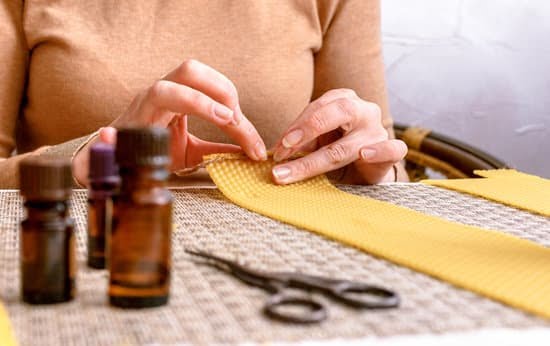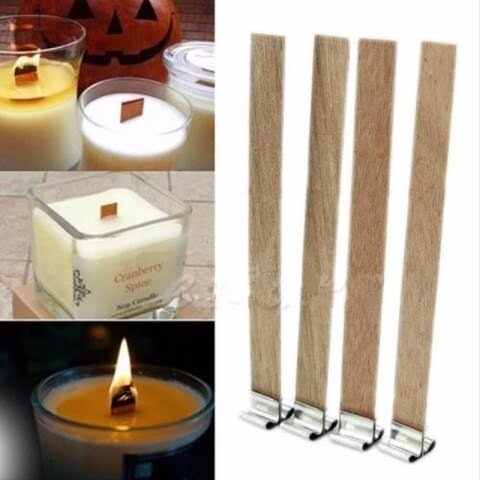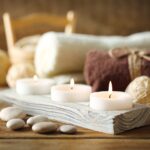Candle making has long been a cherished craft, offering individuals the opportunity to create beautiful, fragrant candles that enhance any space. And while traditional candle making techniques have endured over the years, there is a growing trend towards incorporating natural elements and botanicals into homemade candles. In this blog post, we will be delving into the art of incorporating dried herbs in candle making and specifically focusing on the importance of evenly dispersing these delicate elements.
The allure of adding dried herbs to candle wax lies in their ability to transform a simple candle into an exquisite work of art. Not only do dried herbs offer a visually pleasing addition to the finished product, but they also infuse the air with their delicate fragrance as the candle burns. However, achieving an even distribution of dried herbs throughout the wax can pose a challenge for many candle makers.
By exploring various methods and techniques for dispersing dried herbs evenly in candles, we aim to assist both novice and experienced candle makers in elevating their creations. From selecting optimal herbs based on fragrance and aesthetics to understanding how to incorporate them seamlessly into the wax without compromising its structural integrity, we will cover all aspects of this artistic process.
Join us as we embark on this exciting journey through the world of dried herb-infused candles. Discover how you can utilize these natural elements to not only enhance your home decor but also create captivating scents that transport you to enchanting herb gardens with every flicker of flame. Let’s dive into this exploration of incorporating dried herbs in candle making and unlock your creativity in this time-honored craft.
Understanding the Importance of Evenly Dispersed Dried Herbs in Candle Making
Dried herbs have become a popular addition to homemade candles, not only for their aesthetic appeal but also for their fragrance and therapeutic properties. When it comes to incorporating dried herbs into candle making, achieving an even distribution is crucial. This section will delve into the importance of evenly dispersing dried herbs in candle making and how it enhances the overall experience and visual appeal of the finished candle.
Even distribution of dried herbs in a candle serves multiple purposes. Firstly, aesthetically, it ensures that the herbs are evenly spread throughout the wax, creating a visually pleasing appearance. Whether you choose to have your dried herbs suspended throughout the entire candle or concentrated in certain areas, an even distribution helps achieve a balanced and professional look.
Additionally, even dispersion of dried herbs is important for fragrance purposes. When the herbs are uniformly spread within the candle wax, they can release their aromas more effectively. As the candle burns, the essential oils from the dried herbs mix with heated wax and fill the room with a delightful scent. Unevenly dispersed ingredients may lead to inconsistent fragrance release, which can affect the overall experience and satisfaction of using scented candles.
To ensure proper distribution of dried herbs in your candles, it is essential to mix them thoroughly with melted wax during the preparation stage. This can be done by carefully stirring or gently shaking them together until they are evenly incorporated. Another technique is to pour a layer of slightly cooled wax into the container before adding a layer of dried herbs and repeating this process until all desired layers are achieved.
| Benefits of Evenly Dispersed Dried Herbs in Candle Making |
|---|
| Enhanced aesthetic appeal of the finished candle |
| Consistent and effective fragrance release |
| Improved overall experience and satisfaction for candle users |
Selecting the Ideal Dried Herbs for Candle Making
When it comes to incorporating dried herbs into candle making, selecting the ideal herbs is crucial. The right combination of herbs can enhance both the fragrance and aesthetic appeal of your homemade candles. There are various types of dried herbs commonly used in candle making, each with its own unique properties and benefits.
One popular choice is lavender, which not only adds a lovely scent to your candles but also has a calming effect that can promote relaxation and stress relief. Rosemary is another herb frequently used in candles, known for its refreshing and invigorating fragrance. If you’re looking for a more floral scent, dried rose petals are an excellent option. They add a delicate touch to your candles while exuding a sweet and romantic aroma.
For those who prefer earthier scents, dried eucalyptus leaves or sage can be great choices. Eucalyptus has a fresh and energizing scent, while sage adds a grounding and herbal fragrance.
When selecting the ideal dried herbs for candle making, consider not only the fragrance but also the visual impact they will have on your candles. Some herbs may retain their color when dried, such as lavender buds or rose petals, adding a vibrant touch to your creations. Others may change color during the drying process or when exposed to heat from the candle flame.
Overall, it’s essential to choose dried herbs that align with your desired fragrance profile, aesthetics, and compatibility with candle wax. Experimenting with different combinations of herbs can help you create unique and personalized candles that reflect your style and preferences.
To summarize:
- Lavender: Calming scent with stress-relieving properties
- Rosemary: Refreshing and invigorating aroma
- Dried rose petals: Floral scent that adds a romantic touch
- Eucalyptus leaves: Fresh and energizing fragrance
- Sage: Grounding and herbal aroma Remember that these are just a few examples, and there are countless other herbs that you can explore in your candle making journey. Don’t be afraid to get creative and try different combinations to find the perfect herbs for your candles.
Prepping Dried Herbs for Candle Making
Before incorporating dried herbs into your homemade candles, it is important to take the necessary steps to prepare them properly. Prepping the dried herbs ensures that they will disperse evenly in the candle wax and enhances their overall fragrance release. Here are some techniques to achieve optimal results when prepping dried herbs for candle making:
- Cleaning: Begin by thoroughly cleaning the dried herbs to remove any debris or impurities. You can do this by gently shaking them or using a fine-mesh sieve to sift through the herbs. Be sure to discard any damaged or discolored parts.
- Drying: Once cleaned, it is essential to ensure that the herbs are completely dry before adding them to the candle wax. Moisture can affect the overall quality of the candle and may lead to mold growth over time. Place the cleaned herbs in a dry, well-ventilated area and let them air dry naturally for several days until they feel crisp and brittle.
- Grinding: To achieve a more even dispersal of fragrance throughout the candle, consider grinding your dried herbs into smaller particles. You can use a mortar and pestle or a coffee grinder on a low setting for this purpose. However, be cautious not to grind them too finely, as this can create clogging issues when burning the candle.
By following these steps, you can ensure that your dried herbs are properly prepared before adding them into your candles. This preparation process not only contributes to achieving an even distribution, but it also helps preserve their fragrance over time.
Experiment with different types of dried herbs and find the ones that align with your desired aesthetic and scent profile for your candles. Remember that taking the time to properly prep your dried herbs will result in visually appealing and fragrant candles that will delight both yourself and those who experience them.
Incorporating Dried Herbs During Candle Making
Step-by-Step Guide to Adding Dried Herbs into Candle Wax
Once you have prepared your dried herbs, it’s time to incorporate them into your candle wax. This step is crucial for achieving an even distribution of herbs throughout the candle. Follow these steps to ensure a successful incorporation:
- Choose the Right Time: The ideal time to add dried herbs to your candle wax is when it reaches the desired pouring temperature. This temperature may vary depending on the type of wax you are using, so make sure to refer to the instructions provided by the manufacturer.
- Determine Herb Quantity: Consider the size of your candle and the desired concentration of herbs in the final product. It’s recommended to start with a smaller quantity of herbs and gradually increase if needed.
- Slowly Add Dried Herbs: Carefully sprinkle or pour your selected dried herbs into the melted wax while stirring gently. Avoid adding too many herbs at once, as this can lead to clumping or uneven distribution.
- Stir Continuously: As you add the dried herbs, continue stirring gently to ensure they are evenly dispersed throughout the wax. This will help prevent clumps and create a consistent look and fragrance.
- Observe and Adjust: Take a moment to observe how your dried herbs are dispersing in the wax. If you notice any clumping or unevenness, use a spoon or spatula to break up any clusters and distribute them more evenly.
Techniques for Achieving Even Distribution without Compromising Structural Integrity
While incorporating dried herbs into candles, it’s important to maintain both even distribution and structural integrity. Here are some techniques that can help you achieve this balance:
- Consider Size and Texture: Take into account the size and texture of your dried herbs when choosing how they will be added to your candle wax. Finely ground or powdered herbs can be mixed directly into the melted wax, while larger herbs may be better suited for layering or embedding.
- Layering Techniques: To achieve an aesthetically pleasing appearance, consider layering your dried herbs in the candle. Pour a small amount of wax into the container, sprinkle a thin layer of herbs, and repeat until you reach the desired height. This technique ensures even distribution throughout each layer.
- Embedding Techniques: If you prefer a more subtle look, you can embed dried herbs in the sides of the container rather than mixing them directly into the wax. Gently press the herbs against the interior walls of the container before pouring in the melted wax. As the candle burns, their fragrance will be released gradually.
- Stirring Technique: To ensure that dried herbs are evenly dispersed without compromising structural integrity, use a stirring technique called “accordion folding.” Insert a spoon or spatula into the melted wax and carefully fold it back and forth several times while rotating the container. This method helps distribute herbs evenly while minimizing any disturbance to the overall structure of the candle.
Remember, experimenting with different techniques can lead to unique and beautiful results when incorporating dried herbs into your candles. As always, practice makes perfect.
Achieving Visual Appeal
When it comes to candle making, achieving visual appeal is just as important as creating a pleasant fragrance. One way to create visually stunning candles is by layering different herbs. Layering allows you to incorporate multiple herbs into your candle, creating beautiful patterns and visual interest. Here are some steps to help you achieve this technique:
- Selecting the right herbs: Choose dried herbs that complement each other in color and texture. Consider the aesthetics of each herb and how they will look when layered together in the candle. Some popular choices for layering include lavender buds, rose petals, chamomile flowers, and dried citrus slices.
- Preparing the herbs for layering: Before incorporating the herbs into your candle wax, it’s important to properly prepare them. Make sure they are clean and free from any dirt or debris. You can do this by gently rinsing them with water or using a soft brush to remove any impurities. Once cleaned, allow the herbs to dry completely.
- Layering the herbs: Begin by pouring a thin layer of melted wax into your container or mold. Next, carefully arrange a small amount of one herb onto the melted wax, ensuring an even distribution across the surface of the candle. Press down lightly to embed the herbs within the wax. Repeat this process with different layers of herbs until you achieve your desired design.
Another way to incorporate dried herbs into your homemade candles is through infusing them directly into the wax for a more profound fragrance release. Infusing allows the scent of the herbs to be released gradually as the candle burns, enhancing its overall aromatic experience.
Here are some steps to help you infuse dried herbs into your candles:
- Choosing suitable herbs: Select dried herbs that have strong aromatic qualities and are compatible with candle wax infusion. Popular choices include peppermint leaves, thyme sprigs, eucalyptus leaves, and cinnamon sticks.
- 2.Preparing the herbs for infusion: Before infusing the herbs into your wax, you need to prepare them properly. This can be done by gently crushing or grinding the dried herbs to release their aromatic oils. The finer the herbs are ground, the more potent their fragrance will be when infused into the wax.
- 3.Infusing the dried herbs: There are various techniques for infusing dried herbs into candle wax. One common method is to heat the chosen wax in a double boiler until it melts completely. Once melted, remove from heat and stir in the crushed or ground herbs. Allow the mixture to steep for several hours, allowing the scent of the herbs to infuse into the wax.
By incorporating these advanced techniques of layering and infusing dried herbs into your candle making process, you can create visually appealing candles that not only smell fantastic but also provide a feast for the eyes. Experiment with different herb combinations and designs to unlock your creativity and make unique candles that showcase the beauty of dried herbs.
Troubleshooting
Clumping of Dried Herbs
One common challenge when dispersing dried herbs in candle making is the clumping of the herbs within the wax. This can lead to an uneven distribution and affect the overall aesthetics of the finished candle. Fortunately, there are solutions to overcome this issue.
To prevent clumping, it is important to properly prepare the dried herbs before incorporating them into the candle wax. Ensure that the herbs are finely ground or chopped into small pieces to allow for better dispersion. Using a mortar and pestle or a grinder specifically designed for herbs can help achieve a finer consistency.
Another technique is to mix the dried herbs with a small amount of candle wax before adding them to the larger batch. This helps distribute the herb particles more evenly throughout the wax, reducing the chances of clumping. Additionally, gently stirring the mixture while pouring it into the candle container can further promote even distribution.
Uneven Distribution
Another challenge that may arise when working with dried herbs in candle making is achieving an even distribution throughout the entire candle. Uneven distribution not only affects the appearance but also impacts how fragrance is released when burning the candle.
To address this issue, consider using smaller particle sizes when incorporating dried herbs. Finely ground or powdered herbs tend to disperse more evenly than larger chunks or whole leaves. Mixing different sizes of herb particles can also create a visually appealing variegation effect in your candles.
Furthermore, layering techniques can help achieve better distribution and visual appeal. Instead of mixing all of your chosen herbs together at once, pour layers of melted wax infused with individual herbs one at a time into your container. This method creates distinct layers and allows for even dispersion without causing clumping or settling.
Herbs Discoloration
Some dried herbs may experience discoloration when exposed to heat or light during candle making. This can result in an undesirable change in the appearance of the herbs and affect the overall aesthetic of the candle. Fortunately, there are strategies to minimize discoloration.
To prevent herbs from discoloring, consider using herbs that are less prone to color changes when subjected to heat. Some examples include lavender, chamomile, and rose petals. Alternatively, you can shield the herbs from direct contact with the flame by submerging them deeper into the candle container or placing them between layers of clear wax.
Additionally, storing your finished candles in a cool and dark location can help preserve the color of the dried herbs over time. Direct exposure to sunlight or high temperatures can accelerate discoloration. By taking these precautions, you can maintain the vibrancy and visual appeal of your dried herb-infused candles for longer periods.
Finalizing the Process
In the final step of the candle making process, after incorporating dried herbs into your candles, it is essential to seal and preserve them to ensure long-lasting fragrance and maintain the visual integrity of the herbs over time.
Sealing the dried herbs within the candle is crucial not only for preserving their aroma but also for preventing them from catching fire. When exposed to heat, some dried herbs can become flammable, posing a safety hazard. To prevent this, it is recommended to use a wax sealant or topcoat specifically designed for candle making. These sealants create a protective barrier that keeps the herbs in place while allowing their fragrance to slowly release.
Preserving the visual appeal of dried herbs in candles involves taking proper care of the finished product. Ensure that your candles are stored in cool, dry places away from direct sunlight or sources of heat. High temperatures can cause the wax to melt, potentially damaging or altering the appearance of the dried herbs. Additionally, exposure to sunlight may fade the colors and reduce their vibrancy over time.
To summarize, sealing and preserving dried herbs in candle making is essential for maintaining both their fragrance and visual appeal. By following these steps, you can ensure that your handmade candles continue to delight with their aromatic experience and showcase the natural beauty of dried herbs throughout their lifespan.
| Step | Action |
|---|---|
| Step 1 | Incorporate dried herbs into candle wax. |
| Step 2 | Allow candles to cool completely before moving on. |
| Step 3 | Apply a wax sealant or topcoat to create a protective barrier. |
| Step 4 | Store candles in a cool, dry place away from heat and direct sunlight. |
Conclusion
In conclusion, the incorporation of dried herbs in candle making is a wonderful way to add natural elements and enhance the overall aesthetic appeal and fragrance of homemade candles. Throughout this blog post, we have explored various techniques and tips for evenly dispersing dried herbs in candles. We have discussed the importance of even distribution for both aesthetics and fragrance, as well as provided recommendations for selecting the ideal dried herbs based on compatibility with wax and desired scents.
Additionally, we have delved into the necessary prepping steps for dried herbs to ensure optimal results when incorporating them into candles. Whether it is cleaning, drying, or grinding the herbs, these techniques play a crucial role in achieving even distribution. Furthermore, we have provided a step-by-step guide on how to add dried herbs during the candle-making process without compromising the structural integrity of the candle.
Moreover, we have explored advanced techniques such as layering different herbs and infusing them directly into the wax for visually stunning candles with a profound fragrance release. We have also addressed common challenges that may arise when dispersing dried herbs, including clumping, uneven distribution, and herb discoloration. Our troubleshooting section provides practical solutions to overcome these issues.
Lastly, we recommend effective methods to seal and preserve dried herbs within the candle to ensure long-lasting fragrance and maintain their visual integrity over time. We encourage readers to celebrate the beauty of dried herbs in candle making by exploring their creativity and experimenting with different herb combinations. The possibilities are endless when it comes to creating unique and personalized candles that incorporate nature’s gifts in a beautiful way.
Frequently Asked Questions
How do you add dried herbs to candles?
Adding dried herbs to candles is a simple yet creative way to infuse them with aromatic scents and enhance their visual appeal. To start, choose your desired dried herbs such as lavender, rosemary, or chamomile, ensuring they are completely dry to prevent any moisture interfering with the candle’s performance. Begin by melting the wax in a heat-resistant container at the appropriate temperature according to the type of wax you’re using.
Once melted, remove it from the heat source and let it cool slightly before stirring in the dried herbs gently. Make sure the herbs are evenly distributed throughout the melted wax before pouring it into your candle container. Allow the candle to cool and solidify completely before trimming the wick and enjoying its fragrant ambiance.
Can you burn candles with herbs on them?
While it may be tempting to burn candles with herbs on them, caution should be exercised as this can present potential fire hazards or alter how safely the candle burns. Burning dried herbs directly attached to a candle can increase flame intensity, creating unexpected flare-ups that may cause accidents.
Therefore, it is generally recommended not to light candles when herbs are directly attached to them. However, using essential oils derived from herbs while making candles is a safer alternative that still allows for obtaining fragrances from botanicals.
How do you make a candle set evenly?
Achieving an even burn on a candle set requires some careful attention and proper care during its creation and burning process. Firstly, when pouring melted wax into containers or molds, ensure that it is at an ideal temperature as overly hot or cool wax can result in uneven settling or sinking of the wick during cooling. Additionally, properly centering and securing the wick while pouring helps maintain an even burn later on.
When burning your candle for the first time, allow it to liquefy across the entire surface area so that subsequent burns continue evenly without tunneling or wasting wax along one side only. Regularly trimming the wick to about ¼ inch also helps maintain an even burn as longer wicks can cause the flame to grow too large and produce uneven heat distribution. By following these steps and providing adequate care, you can enjoy a candle set that burns evenly and lasts longer.

Welcome to my candle making blog! In this blog, I will be sharing my tips and tricks for making candles. I will also be sharing some of my favorite recipes.





